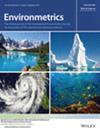A Spatial Hierarchical PGEV Model With Temporal Effects for Enhancing Extreme Value Analysis
Abstract
The peaks over threshold generalized extreme value (PGEV) model by Olafsdottir et al. (2021) is a statistical framework that combines the generalized extreme value (GEV) distribution with the peaks over threshold (PoT) approach, commonly utilized in extreme value analysis. This model effectively fits block maximum data, allowing for the estimation of trends in their intensity and frequency. Incorporating spatial and temporal effects into the PGEV model is crucial when analyzing climate and environmental datasets. We propose a novel spatial hierarchical PGEV model with temporal effects that captures spatial information via a latent Gaussian process applied to the PGEV parameters and integrates time covariates to account for temporal effects. To enhance computational efficiency, we employ the Laplace approximation method as an effective alternative to the traditional Markov Chain Monte Carlo (MCMC) parameter estimation techniques. We demonstrate the efficacy of our proposed methodology through extensive simulation studies covering various scenarios. Additionally, we illustrate the practical application of our model by analyzing rainfall data from Taiwan. Our findings highlight the model's potential for robust extreme value analysis in the context of climate research.

 求助内容:
求助内容: 应助结果提醒方式:
应助结果提醒方式:


